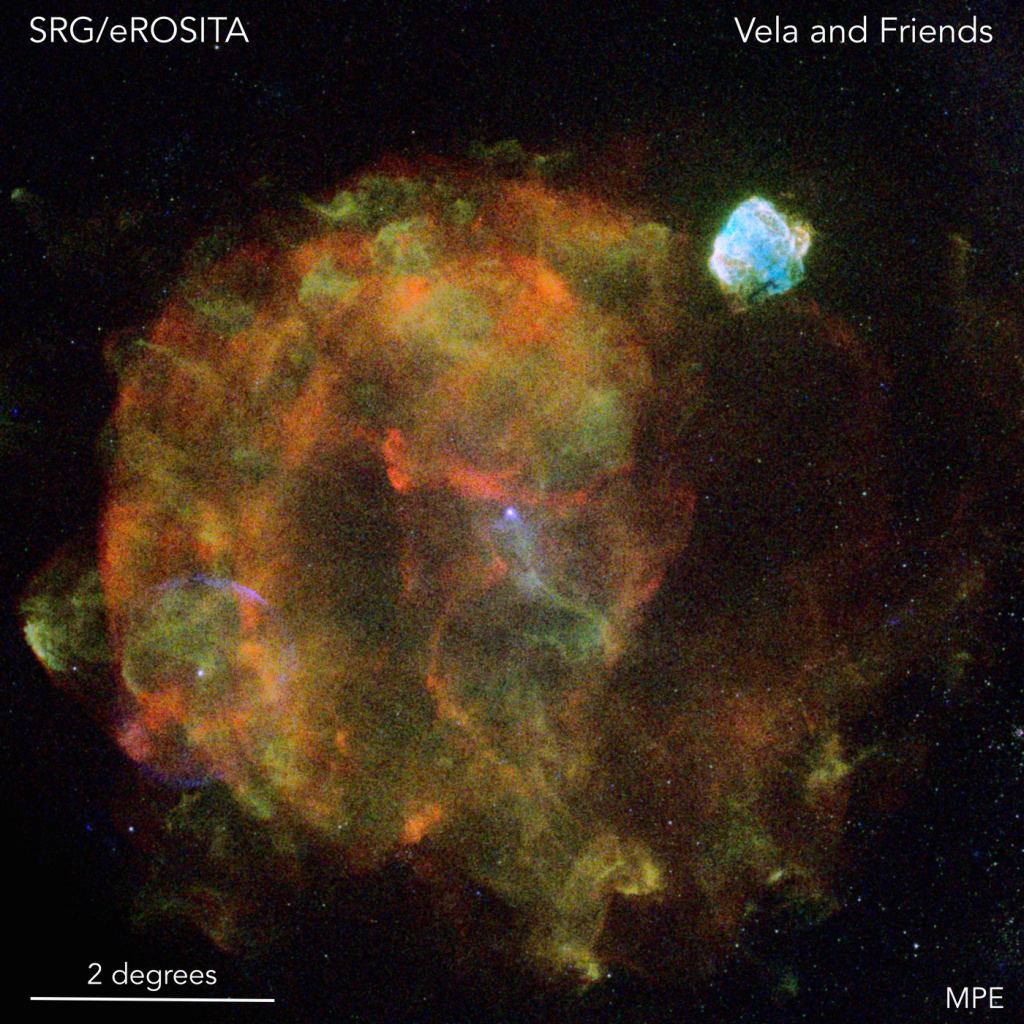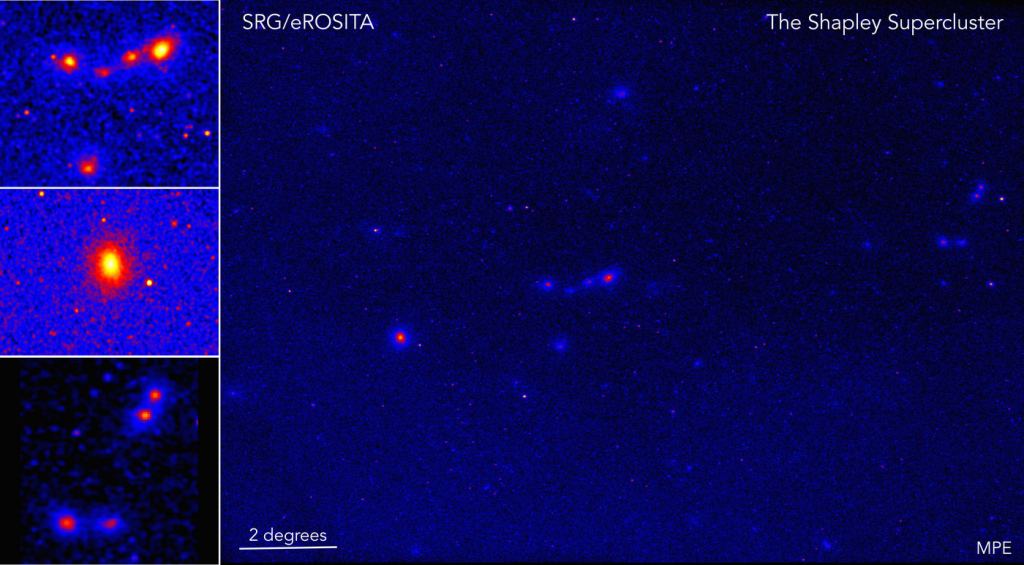X-ray astronomy helps scientists study neutron stars, binary star systems, and supernova remnants, and even helps detect black holes. But even if human eyes had the ability to see X-rays, we couldn’t just look up at the night sky and see these amazing objects since Earth’s atmosphere absorbs and blocks X-rays. So, thank goodness for space telescopes! And the newest X-ray instrument in space has just produced a breathtaking view of the Universe, and is the deepest X-ray view of the sky we’ve ever seen.
The eROSITA X-ray telescope, which is onboard the Russian and German telescope named Spektr-RG (SRG) has completed its first full sweep of the sky. The new composite image maps out the hot, energetic universe and contains more than one million objects. This roughly doubles the number of known X-ray sources discovered over the 60-year history of X-ray astronomy, according to a team of researchers at the Max Planck Institute for Extraterrestrial Physics (MPE) in Germany.

“This all-sky image completely changes the way we look at the energetic universe,” said Peter Predehl, the Principal Investigator of eROSITA at MPE, in a news release. “We see such a wealth of detail – the beauty of the images is really stunning.”
SRG launched in July 2019, and in December reached its final position orbiting the second Lagrange point of the Earth-Sun-system, which is more than 1.4 million km (900 million miles) from Earth. It then spent 182 days slowly rotating, capturing the universe’s X-ray sky with seven cameras. It provides a 360-degree view of the entire night sky.
The research team says that most of the new sources are active galactic nuclei at cosmological distances, marking the growth of gigantic black holes over cosmic time. Clusters of galaxies in the new map will be used to track the growth of cosmic structures and constrain cosmological parameters.
The new images map out supernova remnants in our own and nearby galaxies, along with stars that have strong, magnetically active hot coronae, X-ray binary stars containing neutron stars, white dwarves, and black holes.

It also reveals rare and exotic phenomena, including numerous types of transients and variables, such as flares from compact objects, merging neutron stars, and stars being swallowed by black holes.
“We were all eagerly awaiting the first all-sky map from eROSITA,” said Mara Salvato, a scientist at MPE who leads the effort to combine eROSITA observations with other telescopes across the electromagnetic spectrum. “Large sky areas have already been covered at many other wavelengths, and now we have the X-ray data to match. We need these other surveys to identify the X-ray sources and understand their nature.”
Salvato added that eROSITA can monitor unexpected bursts of X-rays and the team can then alert other telescopes that can turn to study what is possibly producing them.

While the team continues to analyze eROSITA’s first all-sky map and cataloging the new objects, the telescope continues its sweep of the X-ray sky.
“The SRG Observatory is now starting its second all-sky survey, which will be completed by the end of this year,” said Rashid Sunyaev, Lead Scientist of the Russian SRG team, in a statement. “Overall, during the next 3.5 years, we plan to get 7 maps similar to the one seen in this beautiful image. Their combined sensitivity will be a factor of 5 better and will be used by astrophysicists and cosmologists for decades.”
For more images and details, see the MPE website.
Find additional information about eROSITA here.

